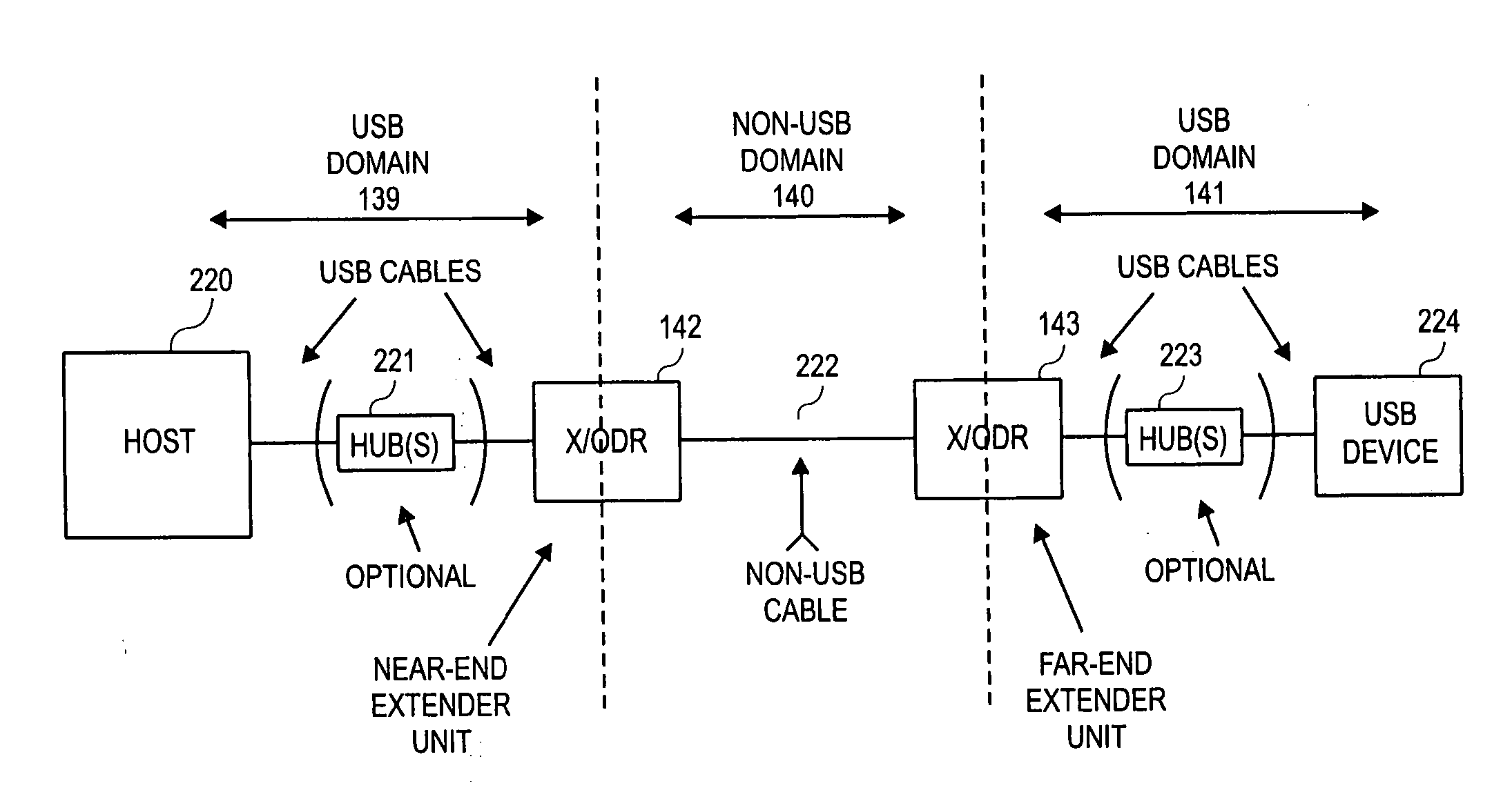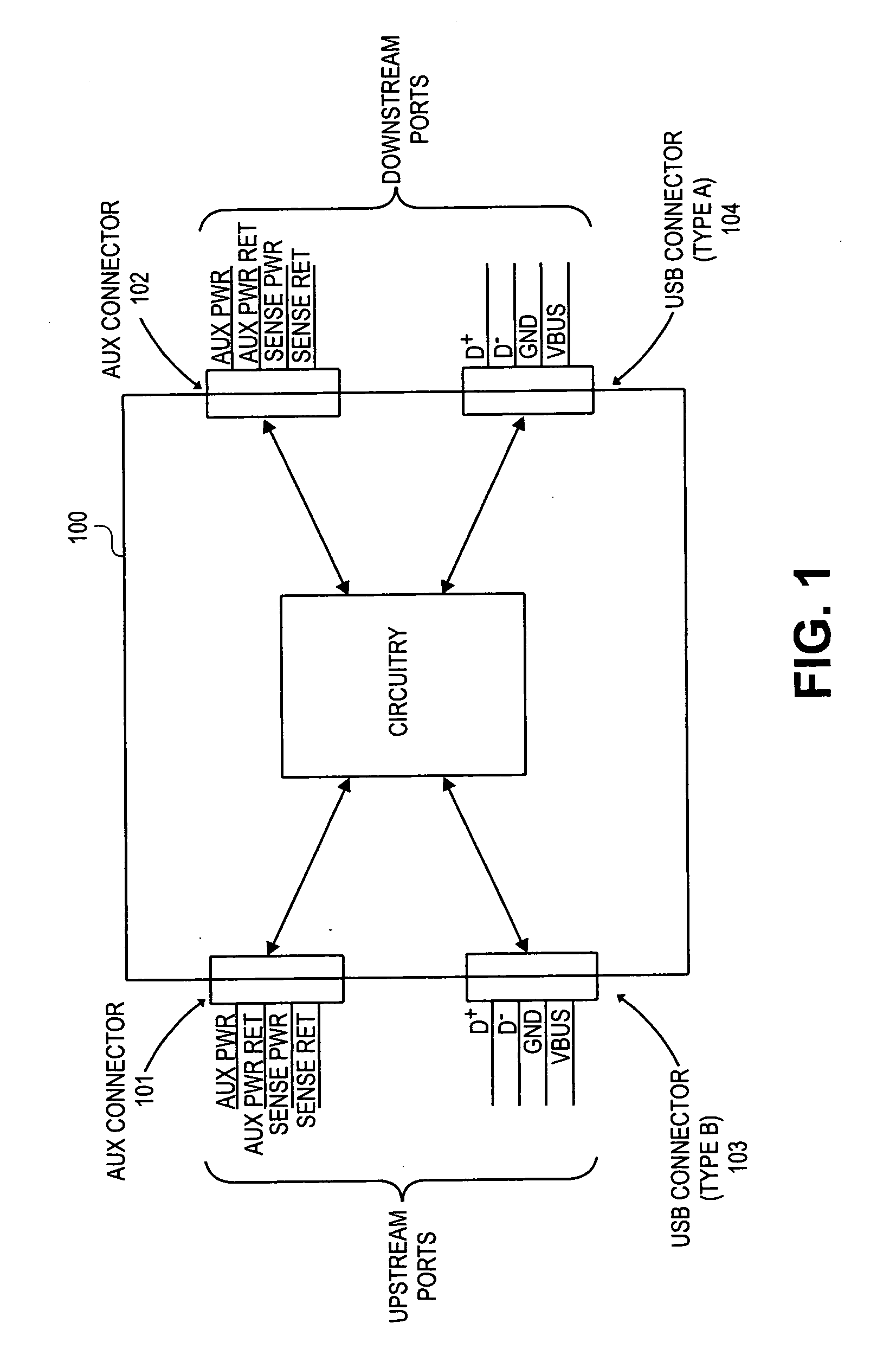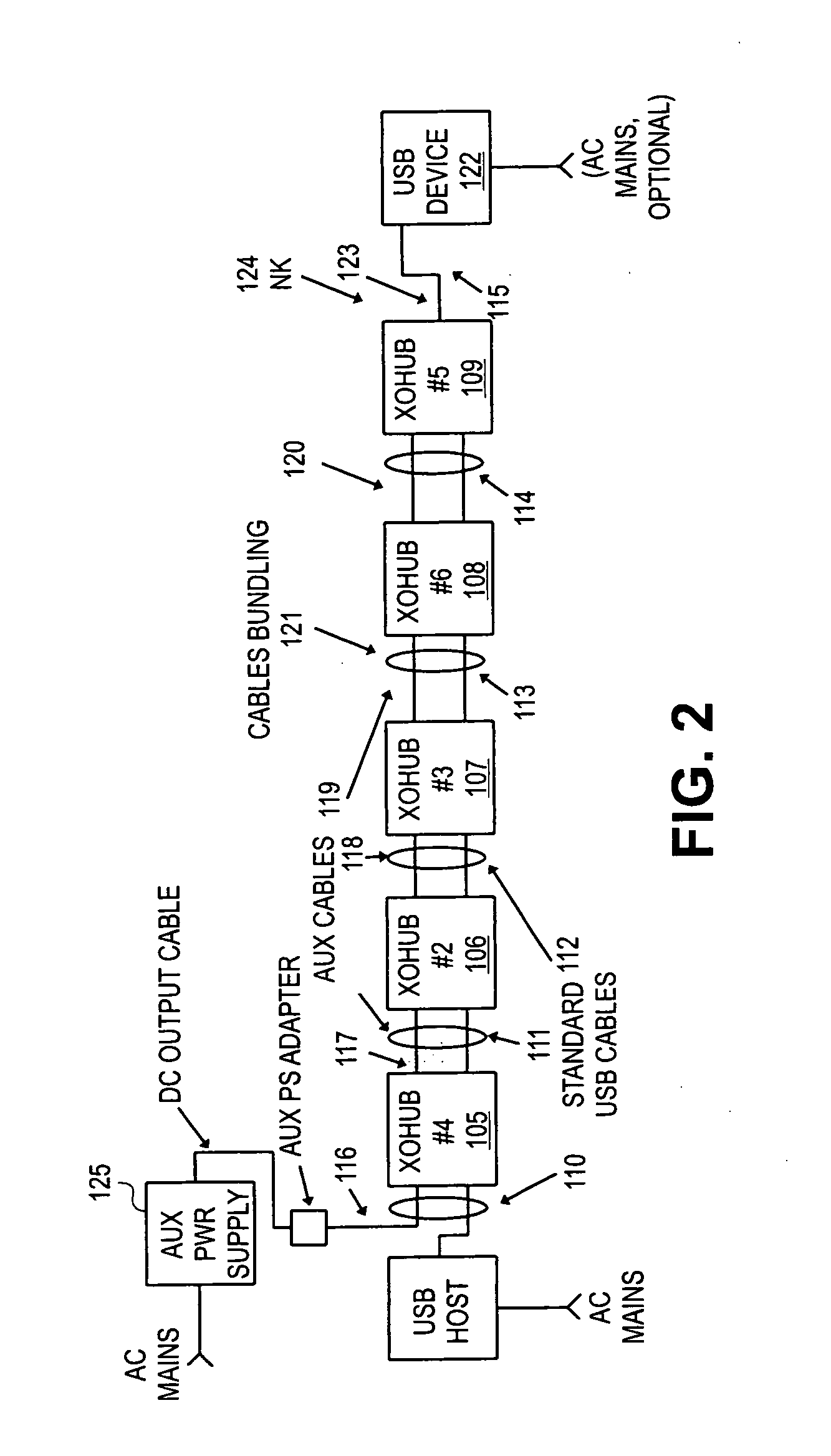Method and apparatus for extending communications over USB
a communication and usb technology, applied in multiplex communication, sustainable buildings, instruments, etc., can solve the problems of increasing the cost of hubs and the requirement for ac power, the inability to achieve maximum cost-effectiveness, and the inability to connect two downstream hub ports together
- Summary
- Abstract
- Description
- Claims
- Application Information
AI Technical Summary
Benefits of technology
Problems solved by technology
Method used
Image
Examples
example implementation
3.14 EXAMPLE IMPLEMENTATION
[0475] The schematic diagram for a quad-simplex type long-haul extension unit is shown in FIGS. 23 and 24. The unit is a module which is intended to be designed into a USB product to handle all extension-related signaling. The same module is used to implement both the near-end and far-end extension logic, as controlled by an input signal (HostEnd).
[0476] In this example implementation most of the circuitry is implemented using an FPGA. The top-level schematic diagram for the FPGA circuitry is shown in FIGS. 25 through 33.
[0477] The top and bottom layers of an example PCB layout are shown in FIGS. 34 and 35.
[0478] The schematic diagram for an example test fixture for the module is shown in FIGS. 36 and 37. The test fixture utilizes standard LAN CAT 5 shielded twisted-pair cable for connection between the near- and far-end units. Power is not communicated over the cable.
PUM
 Login to View More
Login to View More Abstract
Description
Claims
Application Information
 Login to View More
Login to View More - R&D
- Intellectual Property
- Life Sciences
- Materials
- Tech Scout
- Unparalleled Data Quality
- Higher Quality Content
- 60% Fewer Hallucinations
Browse by: Latest US Patents, China's latest patents, Technical Efficacy Thesaurus, Application Domain, Technology Topic, Popular Technical Reports.
© 2025 PatSnap. All rights reserved.Legal|Privacy policy|Modern Slavery Act Transparency Statement|Sitemap|About US| Contact US: help@patsnap.com



